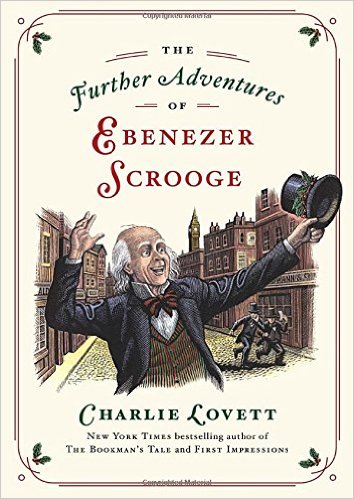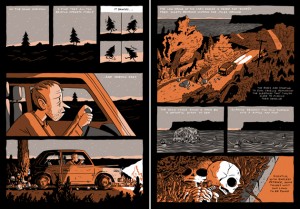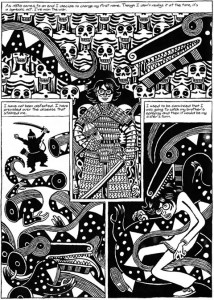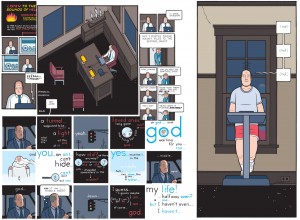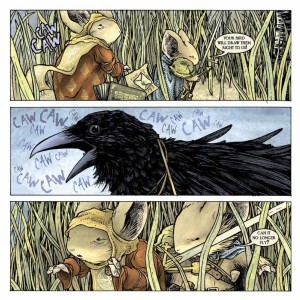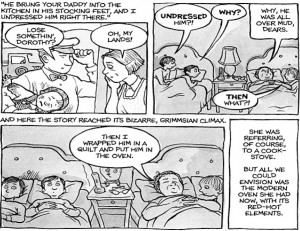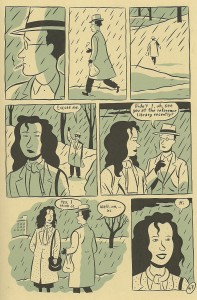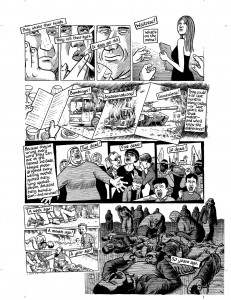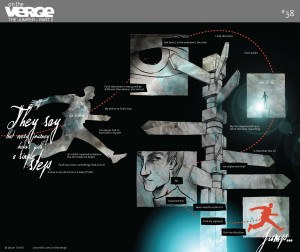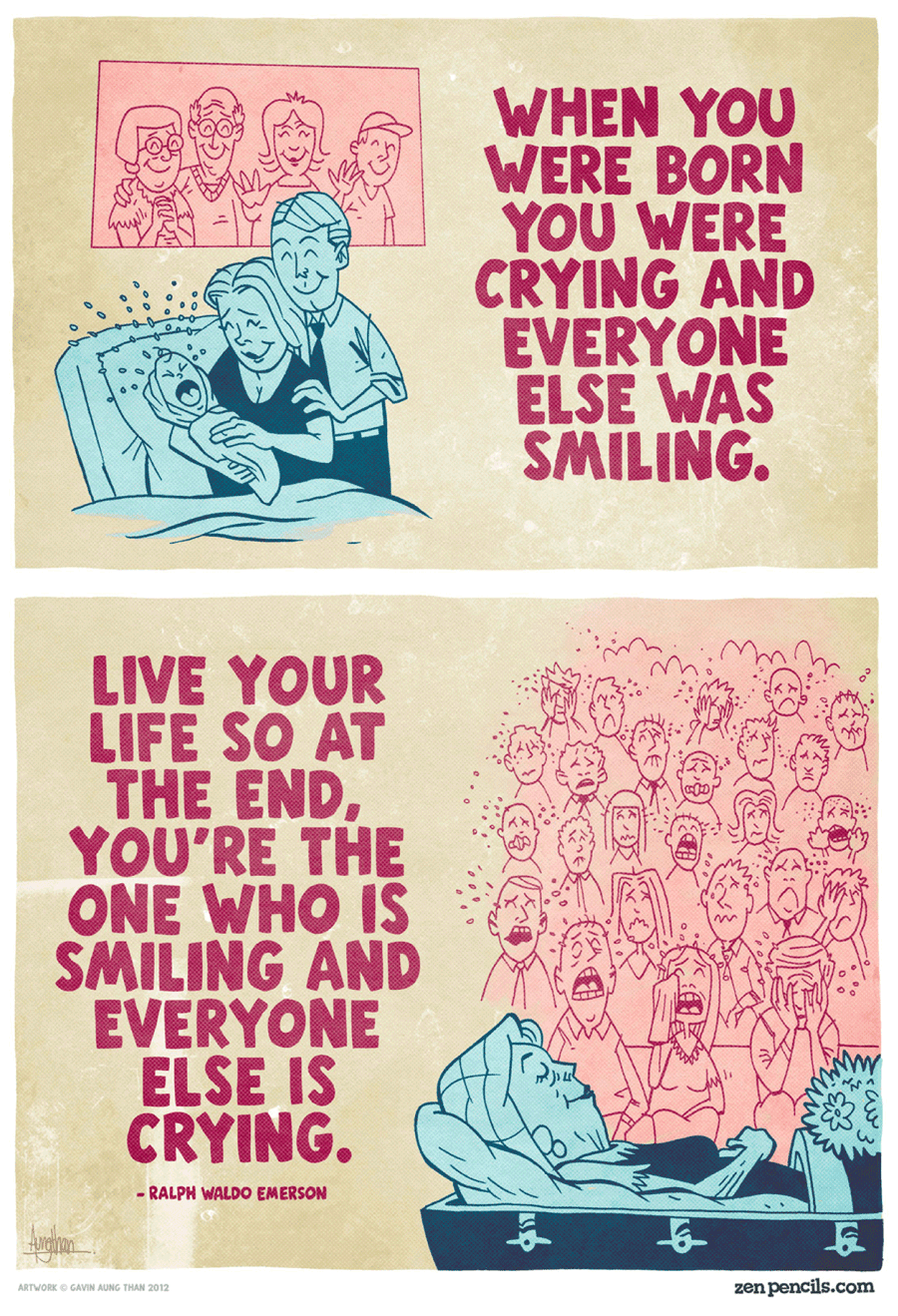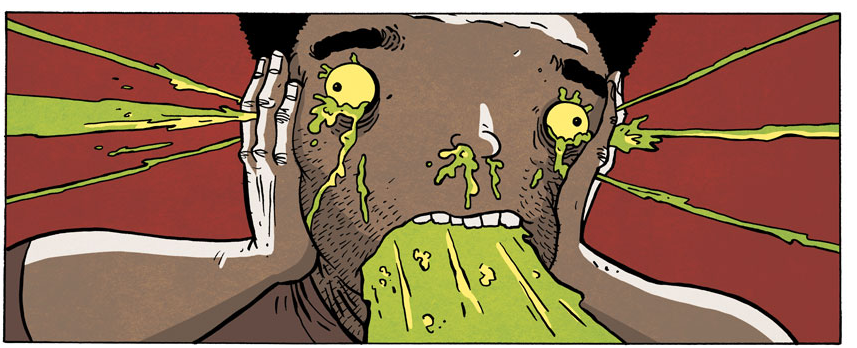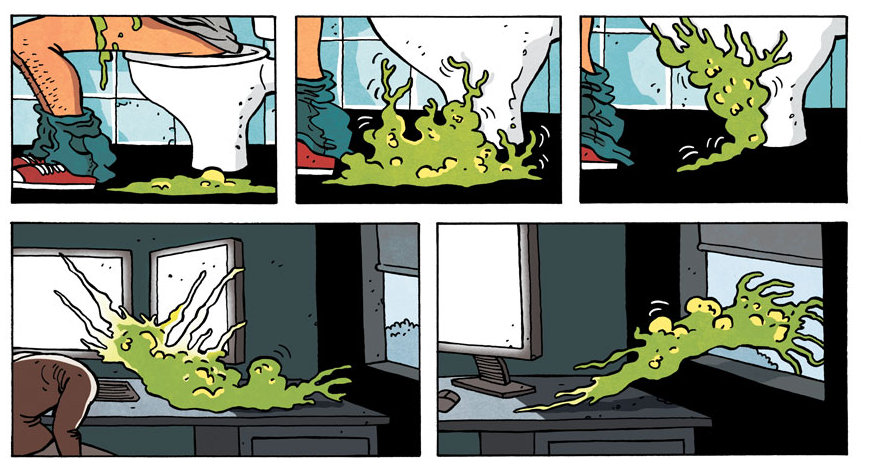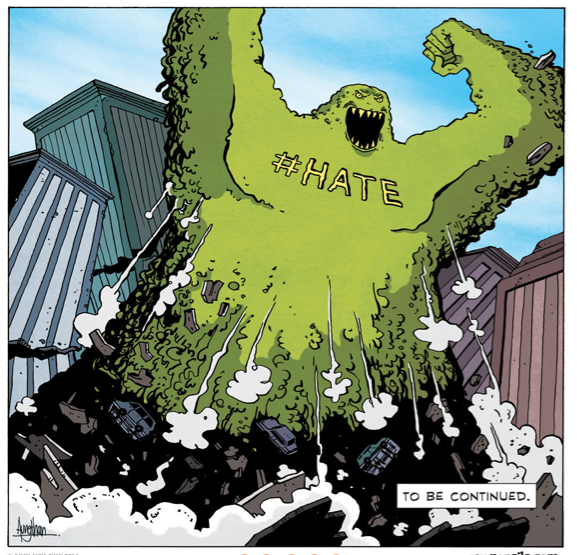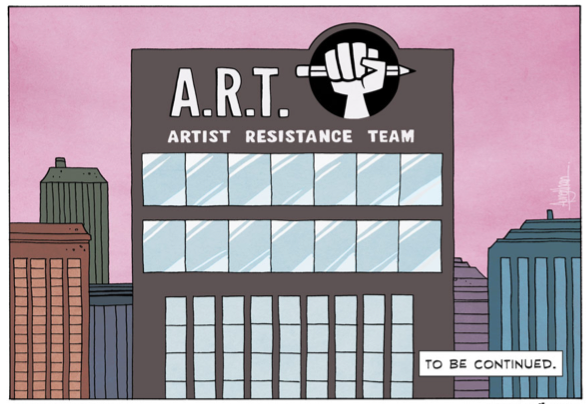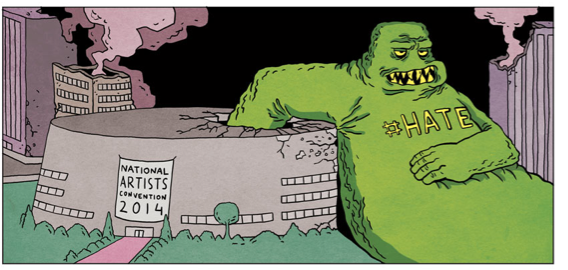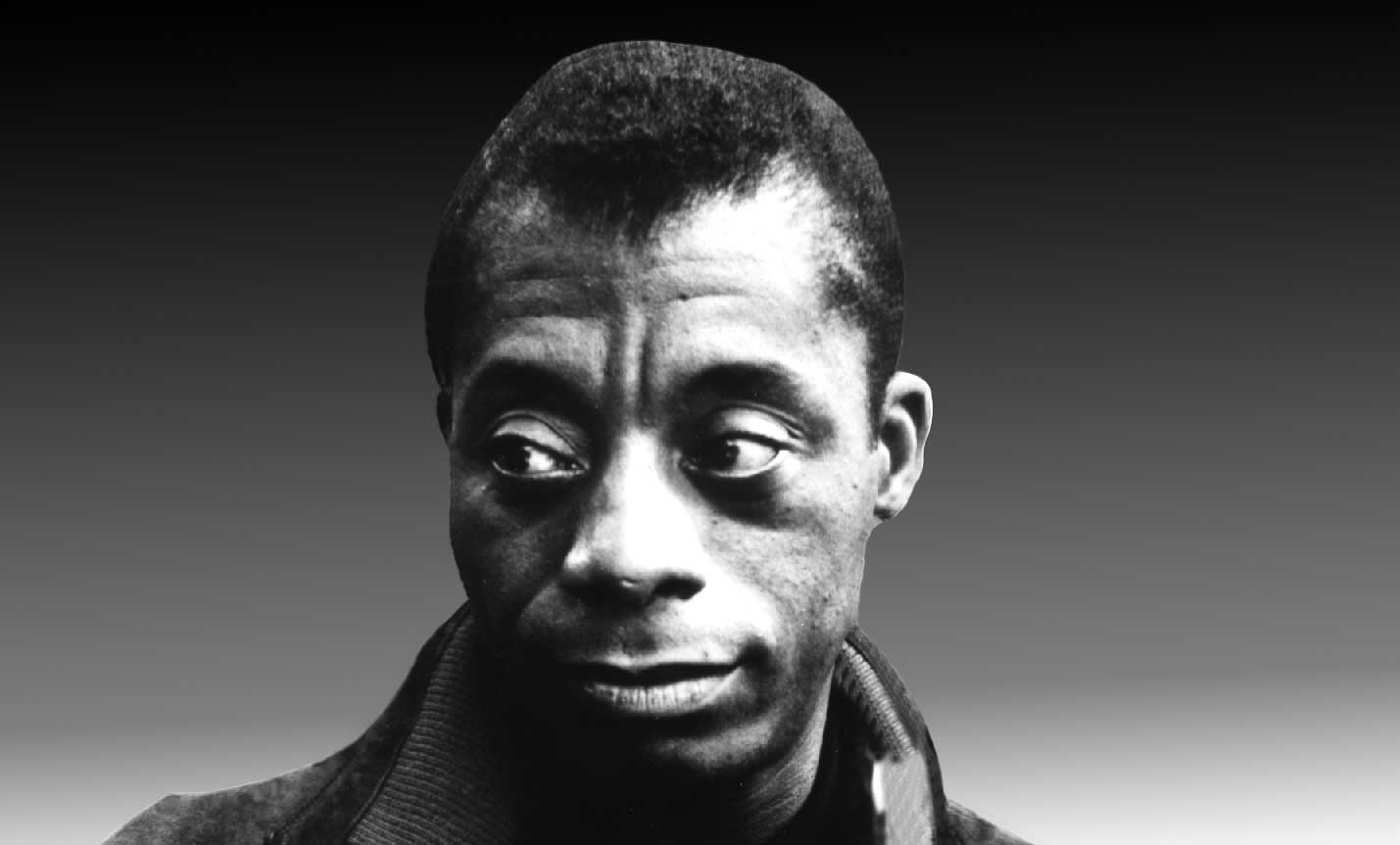I wouldn’t recommend talking about criticism too much.
Your audience will, most likely, frown and move on to more pleasurable pursuits, and before long, it’s you and three other people nobody likes sitting around the kitchen table, drinking and talking, until someone spills their gin out on the table, and then there will be no more gin, and you will hear your heart beating and hear everyone’s heart, hear the human noise you sit there making, not one of you moving, not even when the room goes dark.
Which is hardly surprising. It may well be true that people view criticism “as an extension of the artistic experience,” as Tom Spurgeon suggests. It’s probably fair to say, too, that “criticism” tends to be seen as being synonymous with “reviews,” and those, in turn, as a service rendered to the entertainment seeker—plot summary, some light background info, thumbs-up/thumbs-down recommendation, mission accomplished.
Consequently, the worst and most obnoxious thing a critic could possibly do is be a spoilsport, either by being ambivalent, or by revealing plot points people would rather find out themselves, or by suggesting their taste is superior to the taste of their readers. It’s no wonder critics aren’t terribly popular when, at best, they’re supposed to be glorified food tasters, efficient catalysts for a maximized entertainment and/or artistic experience, ideally with no delusions of being anything more than, at best, useful leeches.
If that’s your approach, then critics talking about criticism isn’t just the most tedious, pointless and presumptuous thing ever, but an outright affront to any and all true practitioners of the arts, to which criticism does not belong. And, you know, that’s a perfectly valid way of approaching criticism if all you’re looking for is someone to provide you with a service.
It’s also a pretty dumb way of approaching criticism.
First up, even if we’re just talking about “Criticism as a Revenue Source,” as Spurgeon does, then writing for people who view criticism in that vein is not a terribly smart thing to do. Sure, it’s good to be reliable and competent and realistic about the context of your work. But Pauline Kael—to stick with Spurgeon’s example—didn’t become Pauline Kael by writing criticism for people who wanted “more on Blade Runner.” Kael became Kael by writing criticism for people who might want to read Kael, even when most people reading her probably did want “more on Blade Runner.”
Second, criticism is an art like any other. And, contrary to popular opinion, it’s as independent as any other art, as well.
Broadly speaking, criticism is the art of thinking and talking about a subject; more narrowly defined, it’s the art of aesthetic interrogation—you don’t need literature, music, film, comics or cave paintings for either of that. An interesting rock will suffice. A tree will suffice. Sure, criticism needs a point of reference. But which of the arts doesn’t? Each work of art necessarily carries its own set of traditions, conventions and themes. Write a story about love, paint a picture of an apple, sing a song about the neighbors’ cat—or write a critical essay about the aesthetic quality of that big cloud formation up there.
Criticism frequently overlaps with the other arts, too. There’s a good deal of it in Romeo and Juliet, Gulliver’s Travels, Citizen Kane, Watchmen and Yeezus—each a work of art on its own terms, and each very much part of a larger discourse of the arts, and of culture. Criticism can be as plain or as artful as you want it to be, it can stand on its own or be part of a larger work. Criticism is arguably more independent than the other arts, because it doesn’t require one particular form—it can adapt to any form you want it to.
As a critic, you’re not the servant of your subject matter, nor its master. You’re its interrogator. It’s your job to strike up an engaging conversation with it, and whether or not you accomplish this is the only way for you—or anyone—to measure your success.
Third, and most significantly, if criticism is the art of thinking and talking about a subject, it follows that the alternative to criticism is to not think and to not talk. Which means that criticism is not merely a job, but an inherent necessity of democracy and culture.
“Not only does democracy demand freedom of criticism and require critical impulses,” German philosopher Theodore Adorno writes.
“It is effectively defined by criticism. […] The system of checks and balances, the two-way control of executive, legislature and judiciary, says as much as: that any one of these powers may exercise criticism upon another and thereby limit the despotism to which each of them, without any critical element, gravitates.” (Translation by me.)
In a social and political sense, consequently, what’s left without criticism is power unchecked. In a cultural context, what’s left without criticism is a state of stagnation and complacency.
* * *
Adorno also points out that the frequent call to be “constructive” is a smoke screen invoked to divert and defuse criticism—to render it ineffectual.
Indeed, even when people mean well and just don’t know any better, the notion of “constructive criticism” misses the rather crucial fact that criticism itself is, inherently, a constructive endeavor, and to achieve its beneficial effects, it needs to be rigorous, thorough and clear in the appraisal of its subject matter.
So asking critics to be “constructive” is a little bit like asking firemen to bring marshmallows. What these people mean is, actually, that they don’t want you to criticize, because being criticized does not result in happy thoughts. But making happy thoughts a priority is utterly destructive, of course. Before long, we will all be munching marshmallows while houses are burning down, and eventually our teeth will fall out and we will die fat and lame-brained and homeless.
So, please, whatever you do, don’t try to be “constructive” with your criticism. That’s not your job. Leave it to the people whose work you’re criticizing to do their jobs. Your job is to criticize, and if you do it right, you’re already contributing something that’s culturally significant and healthy by definition. If somebody just needs happy thoughts, then there are pills for that.
“Those who talk about the positive the most,” Adorno says, “are in agreement with destructive power.” So: “constructive criticism”? Kill it with fire.
* * *
“I think it’s worth reconsidering,” Spurgeon concludes, “what we believe the specific value of criticism to be in the context of the media we have, and maybe not as we think it should be… or fool ourselves into thinking it was.” This is not necessarily the best sentence he’s written. If you replace “criticism” with “art” in that sentence, it sounds pretty goofy; if you don’t, it still does.
I get the sentiment. Spurgeon is talking about revenue streams, after all, and it’s good to be realistic about this stuff. Nobody in the arts has the god-given and inalienable right to be paid, and critics are no exception. If you want to be paid, you have to deal with whatever options there are in the market, maybe adjust your work accordingly, and find someone who agrees to give you money for your work. If that’s what Spurgeon is saying, I’m with him.
However, this doesn’t mean that the work which results from this sometimes less-than-ideal context gets a free pass. If you turn in bad work, it’s not made any better by the fact that you needed to in order to get paid.
It behooves us to keep scrutinizing criticism for what it is, rather than for its context—especially if the context happens to be less than ideal. There’s a responsibility to keep recognizing—and criticizing—poor work, including criticism, regardless of the circumstances it was produced in.
And I’d rather not reconsider that.
* * *
Critics aren’t writing in a vacuum, though. There are fans and creators, too, and I think it’s fair to say that they tend to be fond of criticism in so far as it confirms their own tastes and sensibilities. Which is fine, but sometimes seems to be having an unfortunate effect on the people writing the reviews.
Personally, if I ever complain about too much “negativity,” feel threatened by people who don’t start their sentences with “I think” or “In my opinion,” or peg somebody as a “hater” because I closely identify with some thing or other that’s not up to their critical standards, then please shoot me, chain my corpse to a heavy rock and dump it somewhere over the Mariana Trench. Maybe slit my wrists, too—just to make sure the sharks find me on my way down.
That’s just my opinion.
You see, as a critic, I accept your tastes in art, and they don’t bother me much, whatever they may be. But respect them? Respect, now that’s asking a lot. I’m sorry, but if you’re a huge fan of, say, Joss Whedon’s half-cooked juvenile nonsense, I don’t see a way for me to respect that. How could I possibly respect that? I don’t want to respect that. I hope you’re happy with your tastes, certainly, and secure in them, they being your tastes and all. But asking me to respect them, that seems like a bit of a stretch to me.
I could pretend that I do, of course, in the spirit of harmony—that’s a great point. But what good could possibly come from that, other than maybe you liking me a little bit better and you feeling a little bit more secure in your appreciation of art that I consider to be poisonous, phony and stupid? Not much good, I think, so I probably won’t be doing that. Not that I don’t want to be liked as much as the next guy, mind you, but I guess I’m dysfunctional enough to realize that being a critic and being liked are two things that don’t necessarily go well together and happily pick the former anyway.
Likewise, being a critic, it wouldn’t occur to me to ask for respect. I have no delusions about the fact that most people—including, unfortunately, the ones who practice it—don’t have a clue what criticism is. No matter how long you’ve been at it, no matter where you’ve been published, no matter what you get paid—respect? Pheeew. You gotta have a lotta nerve asking for that shit, if only because it’s not something that can be given just like that.
Respect isn’t something that can be extended at will. Rather, it’s something that grows over time, and that has to be earned through the quality of your work. Which is doubly hard as a critic, because, obviously, your work involves a truthful appraisal of other people’s work. You do the math. Of course, if you establish yourself as someone who does a lot of free PR and is very nice to a lot of people, then a lot of people are going to like you, in a professional kind of way, and I suppose that’s easy to confuse with respect.
Not that there’s anything wrong with liking comics, and being buddies with creators, and pushing and promoting the ones you’re excited about as much as you can—not at all. Fans, creators and PR people do that all the time, and more power to them. But that’s not criticism. Most of the so-called comics reviews out there are not criticism.
Critics whose work I respect are the ones who expose themselves by taking a stance, even when it’s unpopular; the ones who write fearlessly, with passion, knowledge and substance, in ways nobody else could write. If you keep making a lot of noise instead about what you deserve and why-does-so-and-so-not-respect-me, and boohoo, someone was talking about critics and they did not mention me, then I guess I might remember your name eventually, but not necessarily in the context of “respect.”
* * *
Ultimately, a piece of art that nobody ever thinks about or has a conversation about might as well not exist. So, by all means, be a critic. Criticism—harsh, honest, passionate criticism—is crucial. Where criticism does not occur, the arts are dead and people don’t think.
When rigorous and fearless and insolent criticism no longer exists as a political and cultural corrective and is replaced by people “just focusing on the positive” and “sharing what they like,” that’s when you need to worry.
Hey, still here? I’m afraid the booze is long gone, and we’ve switched to drinking from the bitter tears of young-adult-fiction fans instead. We, of the terminology thought police, you know. Can you take it?
(Apologies to Gordon Lish, who hopefully apologized to Raymond Carver.)
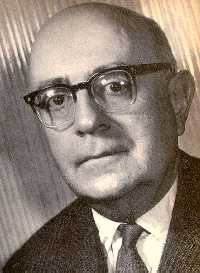
Step back; he is preparing to criticize.

